The third release in the Adidas x Atmos Shibuya Pack promoting Tokyo street culture to the world.
running
If you naturally flee from physical activity, maybe you just have to focus on when you get faster at it.
Read More
Japan’s major cities offer just about everything, but did you know that includes great nature trails? From forests and waterfalls to ancient temples and shrines, many of Japan’s best hiking trails are literally just a step off the bullet train. If you have a Japan Rail Pass, you’ll find it even harder to resist these hikes near Tokyo, Kyoto, Osaka, Kobe, Hiroshima and Fukuoka. Got a day–or even a half-day–to spare? You can still get your hike in!
These hiking routes make it convenient to explore Japan’s natural surroundings. No long drives to get out to the countryside, no great changes in altitude, and there’s always a good view waiting at the top. The trails are sign-posted, well-maintained, and many pass through historic districts and are tailored for sight-seeing by foot. You’ll find eating establishments, public toilets, lockers and even hot springs along the way on some of them. In short, Japan is a day-hikers dream! And if you like to run, these hiking courses make great running trails too.
This week the annual charity event known as the Sumo Run took place in London’s Battersea Park. To raise money for education in sub-Saharan Africa, participants don inflatable sumo suits and run the 5km course around the park, no doubt delighting passersby in the country that gave us Monty Python.
But when media outlets in Japan reported on the event, the audience here was not universally pleased, with some people calling it racist cultural appropriation.
Aaron Porter is a man on a mission. Giving up drinking in 1998 and smoking two years later, he took up running. Before he knew it, his new hobby had become his life’s passion, and he began taking part in marathons, half-marathons and ultra-marathons, running thousands of miles in a single year. Running, Aaron notes, was his recovery.
Now, though, he wants to help others recover. With the goal of running the entire length of Japan, from Kyushu to Hokkaido, Aaron is aiming to raise as much money and awareness for tsunami relief as he can. To do this, however, he needs sponsorship. Which is where you come in.
In the previous article The Marathon Monks of Mt. Hiei: Better than Olympic Athletes? Part I, I explain the sennichi kaihogyo, or 1,000 Day Challenge, in which the Tendai Buddhist monks of Mt. Hiei, sometimes referred to as the “marathon monks,” walk the equivalent of one time around the earth–at the end of which they become living Buddhas.
In Part II, I trace the monks’ steps on the 30 km pilgrimage route, or gyoja michi, which passes through the sacred mountains and forests near the temple complex of Enryakuji. It’s a rigorous course that winds through the mountains, down into the town of Sakamoto, taking them past more than 250 spiritual places. This is the route they circumambulate for days on end over a seven-year period. For tips on the meaning behind the route, be sure to read Part I before continuing!
Rather than walking the course, I decided to run it. Running pilgrimages is a hobby of mine and I find it is a great way to combine the physical with the metaphysical. It brings joy to my runs and this fulfillment keeps the challenge. If you’re a skier, you’re always looking for more mountains. Sky divers jump at different locations. Runners look for new paths and new trails give running purpose. Leave it to your RocketNews24 running reporter to tackle the famed gyoja michi and reveal its intricacies.
I figured that running the 30-km course through the mountains would take the better part of a day. There is no map and from what I have read, Mt. Hiei can be fickle weather-wise. It has snow much of the winter and spring and there are bears. In June, when the weather was perfect, I set out with a small backpack fitted with a water bladder, some medical accoutrements and an extra pair of socks inside (for those inevitable foot and toe problems), plus an ultra light sleeping bag, just in case I got lost and had to spend the night in the forest (been there, done that!).
Early last week we published an article about an unidentified “glowing man” that was spotted on a midnight train in Tokyo. No one knew who he was or where he came from, but everyone on the train that night loved him. After just a few hours, our wonderful readers clued us in to the mystery man’s identity, and what would you know, the very next day we got a friendly email from the glowing man himself.
Joseph Tame is more than just a guy who wears a crazy costume. He’s hoping to unite strangers and break down barriers through the sport of long-distance running. And with the help of over 32 meters of LED lights, plenty of pink pinwheels (which he insists are wind turbines), and a social media rig straight out of a sci-fi flick, Joseph will unite the world this Sunday at the Tokyo Marathon where he’ll be live-streaming the entire race with the help of his homemade gear.
The Tokyo Marathon 2014 is just a few weeks away, and hundreds of thousands of people are already pushing themselves that little bit harder during their daily training, not to mention paying extra attention to the food they eat, in preparation.
As in previous years, Dole Japan has stepped forward to sponsor the event, providing piles of hand-grown Lakatan bananas, which contain plenty of citric acid essential during exercise, for runners to munch on. This time around though, the company is awarding 200 runners with a very special bite to eat, or perhaps let sit on the shelf and slowly turn to mush: the Trophy Banana, complete with personalised message printed on the skin.
What’s your 100m sprint time? If it’s over 23.8 seconds, then you’re slower than a 90-year-old! Last month Japan’s Turbo Granny smashed the Japanese record for her age category and now has her sights set on the world record.

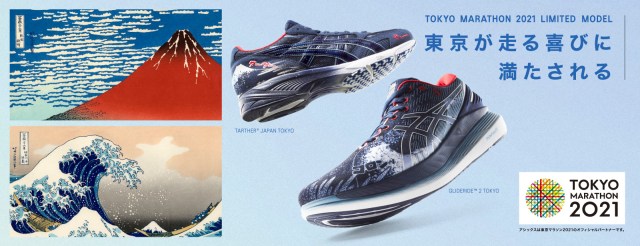
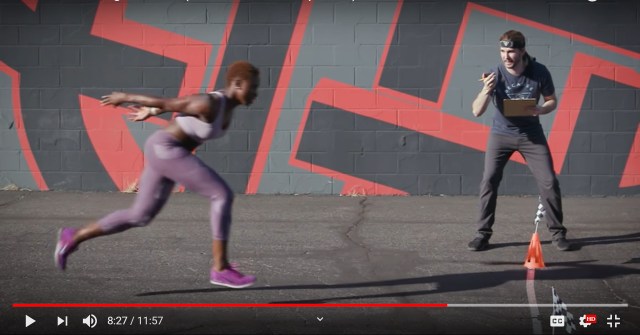
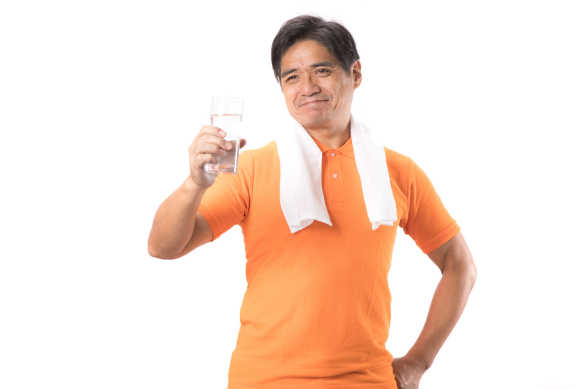
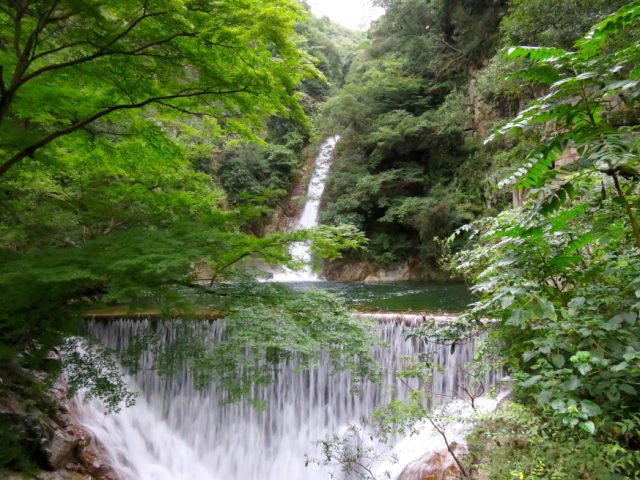
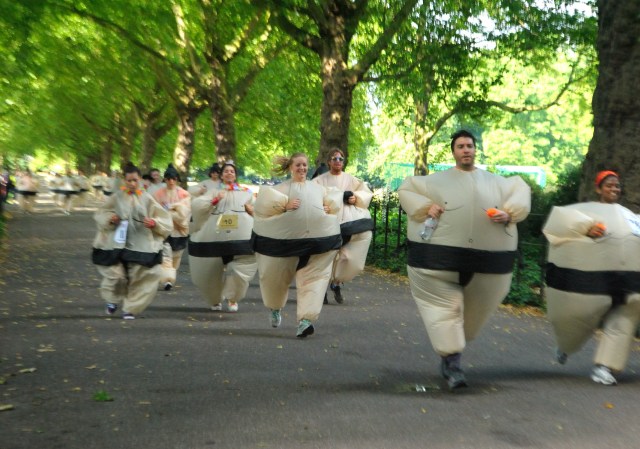
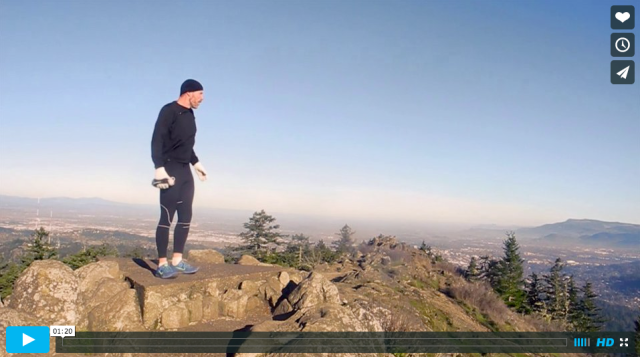

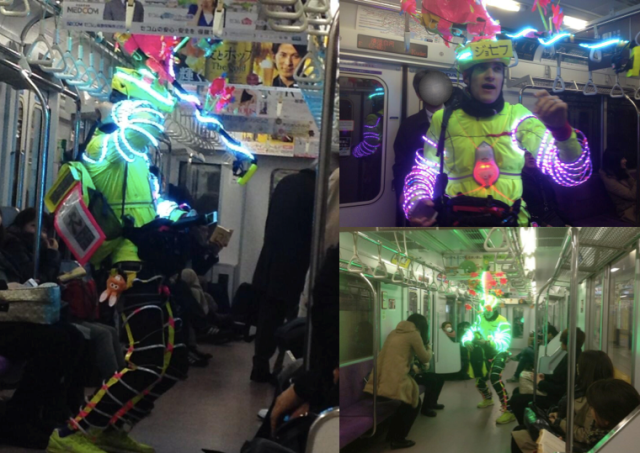
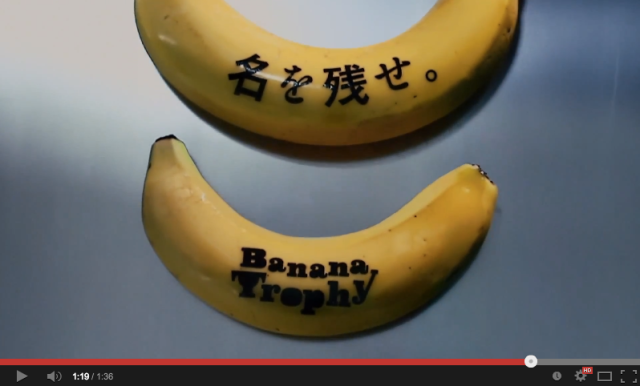
 That time Seiji called JASRAC to ask why he didn’t get paid royalties for his song being on TV
That time Seiji called JASRAC to ask why he didn’t get paid royalties for his song being on TV Cup Noodle tries an authentic Jiro-style ramen, but something’s not quite right
Cup Noodle tries an authentic Jiro-style ramen, but something’s not quite right We revisited Sweets Paradise after a decade to see if Japan’s dessert buffet still delivers
We revisited Sweets Paradise after a decade to see if Japan’s dessert buffet still delivers What’s inside the McDonald’s Japan fukubukuro lucky bag for 2026?
What’s inside the McDonald’s Japan fukubukuro lucky bag for 2026? This Hakata hotel is worth a little extra thanks to its all-you-can-eat steak breakfast buffet
This Hakata hotel is worth a little extra thanks to its all-you-can-eat steak breakfast buffet Japan’s 10 best Ferris wheels for beautiful views, as chosen by travelers【Survey】
Japan’s 10 best Ferris wheels for beautiful views, as chosen by travelers【Survey】 Japan’s most popular domestic burger chain adds 100-percent vegan burgers to menu
Japan’s most popular domestic burger chain adds 100-percent vegan burgers to menu Sanrio lucky bag gives you cute My Melody and Kumori merch, all your money back in burgers coupons
Sanrio lucky bag gives you cute My Melody and Kumori merch, all your money back in burgers coupons 7-Eleven Japan’s ramen-cooking robot whipped us up a bowl of noodles【Taste test】
7-Eleven Japan’s ramen-cooking robot whipped us up a bowl of noodles【Taste test】 Lacquerware supplier to emperor of Japan and Pokémon team up for new tableware
Lacquerware supplier to emperor of Japan and Pokémon team up for new tableware Starbucks Japan ready to get Year of the Horse started with adorable drinkware and plushies【Pics】
Starbucks Japan ready to get Year of the Horse started with adorable drinkware and plushies【Pics】 7 great places to see Mt. Fuji from without having to climb it
7 great places to see Mt. Fuji from without having to climb it Cyberpunk anime meets traditional culture in Ghost in the Shell gold leaf Japanese changing screens
Cyberpunk anime meets traditional culture in Ghost in the Shell gold leaf Japanese changing screens Hayao Miyazaki says Happy New Year to Studio Ghibli fans with new art for Year of the Horse
Hayao Miyazaki says Happy New Year to Studio Ghibli fans with new art for Year of the Horse Hello Kitty Choco Egg figures are an adorable trip through three periods of Japanese pop culture【Pics】
Hello Kitty Choco Egg figures are an adorable trip through three periods of Japanese pop culture【Pics】 We found possibly the quietest Japanese-style hotel in Tokyo’s bustling Shinjuku district
We found possibly the quietest Japanese-style hotel in Tokyo’s bustling Shinjuku district Sumo Sanrio! Hello Kitty and pals team up with Japan Sumo Association for new merch【Pics】
Sumo Sanrio! Hello Kitty and pals team up with Japan Sumo Association for new merch【Pics】 Japan’s oldest largetooth sawfish in captivity back on display in Mie Prefecture
Japan’s oldest largetooth sawfish in captivity back on display in Mie Prefecture More Than a Capsule Stay: Why Solo Travelers Choose “global cabin Yokohama Chinatown”
More Than a Capsule Stay: Why Solo Travelers Choose “global cabin Yokohama Chinatown” 7-Eleven Japan starts new temporary luggage storage service in over 300 branches
7-Eleven Japan starts new temporary luggage storage service in over 300 branches Disillusionment at Tsukiji’s tourist-target prices led us to a great ramen restaurant in Tokyo
Disillusionment at Tsukiji’s tourist-target prices led us to a great ramen restaurant in Tokyo Starbucks teams up with 166-year-old Kyoto doll maker for Year of the Horse decorations【Photos】
Starbucks teams up with 166-year-old Kyoto doll maker for Year of the Horse decorations【Photos】 Tokyo considering law requiring more trash cans following litter increase in heavily touristed area
Tokyo considering law requiring more trash cans following litter increase in heavily touristed area Tokyo’s Tsukiji sushi neighborhood asks tour groups to stay away for the rest of the month
Tokyo’s Tsukiji sushi neighborhood asks tour groups to stay away for the rest of the month Tokyo event lets you travel back in time, for free, to celebrate 100 years since Showa era start
Tokyo event lets you travel back in time, for free, to celebrate 100 years since Showa era start Sanrio theme park in Japan announces plans to expand into a Sanrio resort
Sanrio theme park in Japan announces plans to expand into a Sanrio resort Japan may add Japanese language proficiency, lifestyle classes to permanent foreign resident requirements
Japan may add Japanese language proficiency, lifestyle classes to permanent foreign resident requirements Stamina-destroying “Paralysis Noodles” are Tokyo’s newest over-the-top ramen innovation
Stamina-destroying “Paralysis Noodles” are Tokyo’s newest over-the-top ramen innovation Survey asks foreign tourists what bothered them in Japan, more than half gave same answer
Survey asks foreign tourists what bothered them in Japan, more than half gave same answer Japan’s human washing machines will go on sale to general public, demos to be held in Tokyo
Japan’s human washing machines will go on sale to general public, demos to be held in Tokyo Japan’s deadliest food claims more victims, but why do people keep eating it for New Year’s?
Japan’s deadliest food claims more victims, but why do people keep eating it for New Year’s? We deeply regret going into this tunnel on our walk in the mountains of Japan
We deeply regret going into this tunnel on our walk in the mountains of Japan Studio Ghibli releases Kodama forest spirits from Princess Mononoke to light up your home
Studio Ghibli releases Kodama forest spirits from Princess Mononoke to light up your home Major Japanese hotel chain says reservations via overseas booking sites may not be valid
Major Japanese hotel chain says reservations via overseas booking sites may not be valid Put sesame oil in your coffee? Japanese maker says it’s the best way to start your day【Taste test】
Put sesame oil in your coffee? Japanese maker says it’s the best way to start your day【Taste test】 No more using real katana for tourism activities, Japan’s National Police Agency says
No more using real katana for tourism activities, Japan’s National Police Agency says Starbucks Japan reveals new sakura drinkware collection, inspired by evening cherry blossoms
Starbucks Japan reveals new sakura drinkware collection, inspired by evening cherry blossoms Updated cherry blossom forecast shows extra-long sakura season for Japan this year
Updated cherry blossom forecast shows extra-long sakura season for Japan this year Japan’s 10 best Ferris wheels for beautiful views, as chosen by travelers【Survey】
Japan’s 10 best Ferris wheels for beautiful views, as chosen by travelers【Survey】 Japan’s most popular domestic burger chain adds 100-percent vegan burgers to menu
Japan’s most popular domestic burger chain adds 100-percent vegan burgers to menu Sanrio lucky bag gives you cute My Melody and Kumori merch, all your money back in burgers coupons
Sanrio lucky bag gives you cute My Melody and Kumori merch, all your money back in burgers coupons 7-Eleven Japan’s ramen-cooking robot whipped us up a bowl of noodles【Taste test】
7-Eleven Japan’s ramen-cooking robot whipped us up a bowl of noodles【Taste test】 Lacquerware supplier to emperor of Japan and Pokémon team up for new tableware
Lacquerware supplier to emperor of Japan and Pokémon team up for new tableware Popular Japanese ramen restaurant Ichiran’s lucky bags are great value for money
Popular Japanese ramen restaurant Ichiran’s lucky bags are great value for money 50 different Hello Kitties from across kawaii history appear in McDonald’s Japan Happy Meals【Pics】
50 different Hello Kitties from across kawaii history appear in McDonald’s Japan Happy Meals【Pics】 Japan’s top 10 travel experiences in the sky【Survey】
Japan’s top 10 travel experiences in the sky【Survey】 One of Japan’s rarest sweets is a sell-out hit that looks and tastes like frost
One of Japan’s rarest sweets is a sell-out hit that looks and tastes like frost Clash of the instant ramen! Taste-testing seven instant noodles on a flavor trip across Kyushu
Clash of the instant ramen! Taste-testing seven instant noodles on a flavor trip across Kyushu 37 amazing photographs of the people of old Japan living their daily lives 【Photos】
37 amazing photographs of the people of old Japan living their daily lives 【Photos】 Spirited Away bathhouse spirits steal the spotlight in new Studio Ghibli finger puppet collection
Spirited Away bathhouse spirits steal the spotlight in new Studio Ghibli finger puppet collection Princesses, fruits, and blacksmiths: Study reveals the 30 most unusual family names in Japan
Princesses, fruits, and blacksmiths: Study reveals the 30 most unusual family names in Japan Japan has a Reassuring Door Opener to soothe coronavirus fears, so let’s try it out【Photos】
Japan has a Reassuring Door Opener to soothe coronavirus fears, so let’s try it out【Photos】